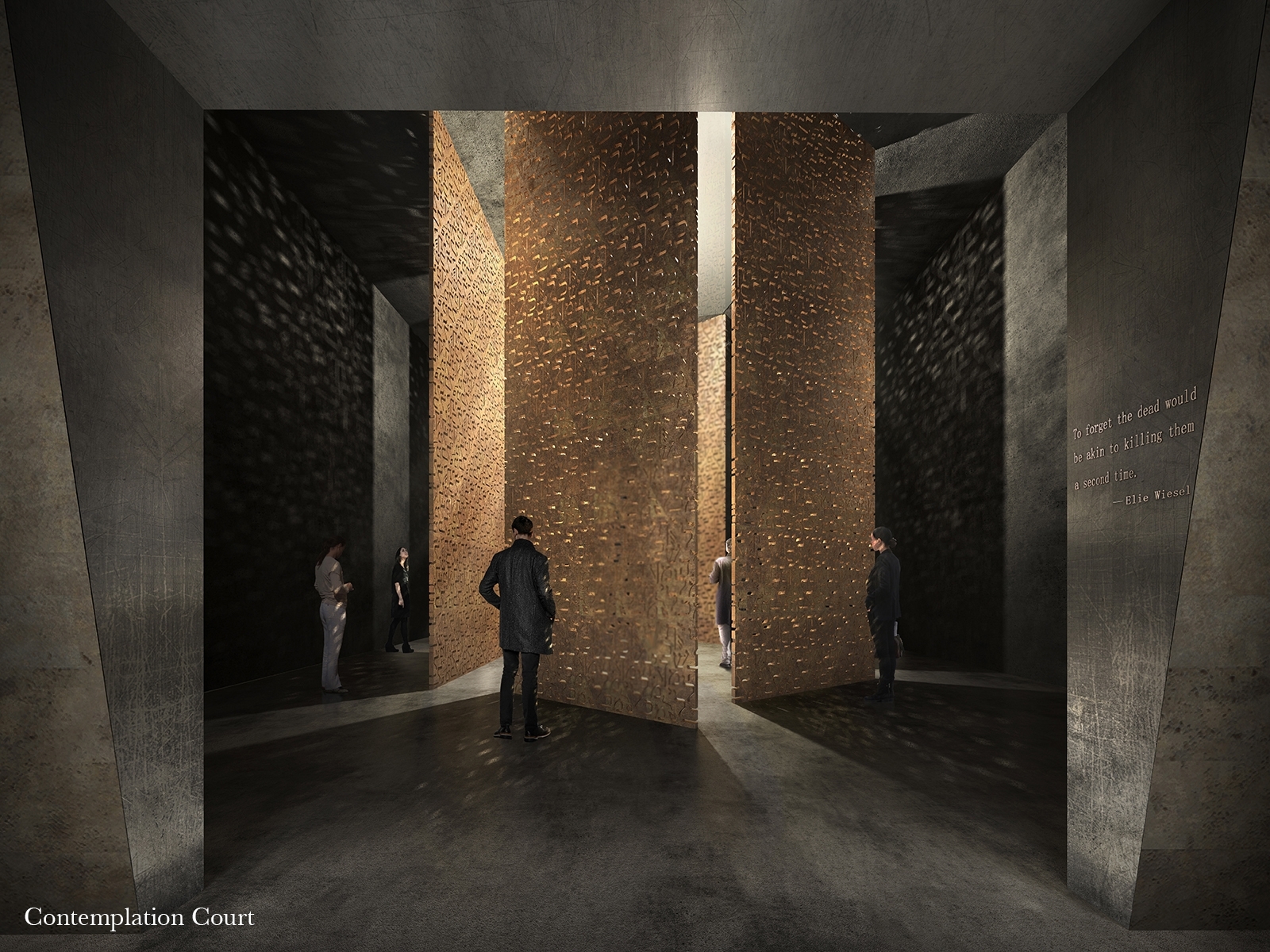Revealed: The design for London's 'iconic' Holocaust memorial
The memorial outside the Houses of Parliament is scheduled to be completed by 2021.
A series of 23 bronze fins atop an underground museum has been revealed as the winning design for London's Holocaust memorial.
The structure next to the Houses of Parliament will commemorate the lives those who were murdered by the Nazis during the Second World War, including six million Jews, as well as Roma, LGBT, and disabled people. It is scheduled to be completed by 2021 and is predicted to cost £50m ($66m).
What will the Holocaust memorial feature?
Located in Victoria Tower Gardens in Westminster, it will comprise of a series of tall, fin-like sculptures. Beneath it will be a learning centre to tell the stories of those affected and highlight facts about the atrocity. The memorial will also address current forms of hatred and prejudice including anti-Semitism, extremism, Islamophobia, racism, homophobia and ask how these can be tackled. There is also a "contemplation court" made up of eight bronze panels.
Sir Peter Bazalgette from the UK Holocaust Memorial Foundation said: "Remembering is not enough. The new memorial is also about today and will look forward," according to The Guardian.
Who designed the memorial?
Architect Sir David Adjaye - who designed the Smithsonian National Museum of African American History and Culture in Washington, DC - led the team of designers. Israeli designer Ron Arad, who is behind Tel Aviv's tallest building, is also part of the winning consortium alongside award-winning landscape architects Gustafson Porter and Bowman.
A panel of 13 judges, including first and second generation Holocaust survivors, the Chief Rabbi, the Mayor of London Sadiq Khan, and experts from the world of architecture, art and design decided on the winner.
The winning team beat other prestigious architects including Daniel Libeskind, Zaha Hadid and Norman Foster, as well as the sculptor Anish Kapoor and Turner prize winner Rachel Whiteread.









What does it signify?
The gaps between the 23 bronze fins symbolise the 22 countries where Jewish people were targeted during the Second World War. The design aims to show respect to victims of the Holocaust while maintaining the area as a green space for the public, and encouraging people to come together.
With echoes of Daniel Libeskind's Holocaust Memorial in Berlin, the tall fins are designed to force visitors to experience a moment of isolation as they descend the stairs to a threshold area. There, the public is encouraged to take a moment to contemplate the meaning of their surroundings before entering the learning centre. Visitors will exit to see Parliament to emphasise the importance of democracy.
Sir David has described the location as a "park of Britain's conscience" due to its monuments celebrating the fight against injustice. Statues of suffragette Emmeline Pankhurst, the Buxton Memorial Fountain which commemorates the emancipation of slaves by Britain, and Rodin's Burghers of Calais statue commemorating the Hundred Years War are all positioned nearby.
How have people responded?
It has been generally well-received. Jonathan Goldstein, chair of the Jewish Leadership Council, said: "At a time when hate crime is on the rise, it is more important than ever to educate about the consequences of unchecked and senseless hatred.
"This iconic memorial will not only be a reminder of where hate can lead but also a symbol of where we as a country stand on this issue. Having a memorial in the heart of our democracy, next to the Houses of Parliament – where our laws are made and scrutinised – sends a very clear message that hatred has no place in Britain and will be challenged at every juncture."
But not everyone has welcomed it. In a letter signed by MPs and peers, some local residents flagged their concerns that the memorial would lead to higher levels of security, and would prevent ordinary people using it as an "oasis of calm" to exercise, play, sunbathe and walk the dog.






















